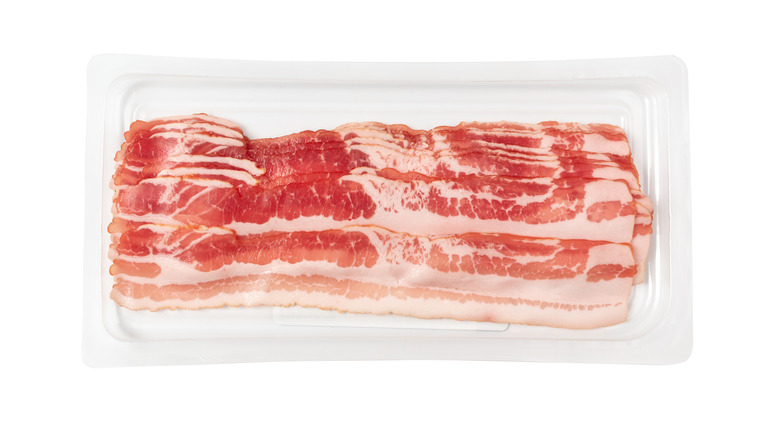Is There A Difference Between Cured And Processed Meat?
Due to a growing number of health concerns, processed meat is on the minds of so many these days. Studies have scrutinized the biological impact of processed meat consumption, and many have uncovered frightening links to colorectal cancer, type 2 diabetes, cardiovascular disease, and dementia, among other serious conditions. At the same time, you've probably come across news stories that say the nitrates and nitrites present in cured meats can have the same dangerous effects. These overlapping reports can stir some confusion about where the line between cured and processed meats falls. If there isn't a difference, then why do we talk about them in separate terms?
As to whether cured and processed meats differ, the answer is neither a firm yes nor a no. That's because some types of processed meats are cured, but other types are not. It's the classic "all x's are y, but not all y are x's" scenario, like how all humans are mammals, but not all mammals are humans. It helps to distinguish between cured meats because the process used to make them differs from the others under the processed meat umbrella. Curing also holds particular historical significance in processed foods, perhaps humanity's earliest method. There is a lot of overlap in the culinary applications and nutritional value of cured meats versus their processed brethren, but we can point to some crucial distinctions.
Cured meat is a subcategory of processed meat
Curing is a meat preservation method that uses sodium chloride (salt), sodium nitrite, and sodium nitrate to stave off mold and bacteria. It works by drawing the water out of meat, making it an uninhabitable environment for microorganisms. Curing can be done in liquid brine or with a dry rub. It is a fairly straightforward process that has remained consistent throughout history. Evidence of salt-cured meats dates back to at least 3000 B.C. in Mesopotamia. In Medieval Europe, cured meats were reserved for royalty, but nowadays, you'll find them at the center of every charcuterie board.
Popular cured meats in the United States include bacon and hot dogs, and internationally speaking, Italy is particularly famous for its cured meats like prosciutto and soppressata. Some of these products are also available uncured, but uncured meats are actually cured as well. When you see that word on a label, it just means that the manufacturer used plant-based nitrites instead of synthetic ones. Nitrites are responsible for one of cured meat's most defining features, which is a pink or red hue. When you see the words "cured" or "uncured" on any meat product, you have a clear picture of what you're getting. With other processed meats, the distinction is less clear.
Other types of processed meat
Cured meats are a specific and clearly defined category, but the term "processed meat" is anything but, as there is no strict definition. The World Health Organization defines it as "meat that has been transformed through salting, curing, fermentation, smoking, or other processes." That gives us some clarity, but the vague wording of "other processes" leaves a massive hole in the definition. By that guidance, anything other than raw meat could be said to have been processed, but in general, freshly cooked meats and even some canned options like tuna and salmon are not considered to be processed. On the other hand, almost all varieties of deli meats, even non-preserved options, are generally considered processed.
Processed meats are a significant part of many people's diets and are, quite frankly, delicious. However, processed meats also raise a number of health concerns. As previously mentioned, nitrates and nitrates have been linked to cancer but also have benefits. Neither chemical is inherently bad on its own, but they convert into two other chemicals: nitric oxide and nitrosamines. Nitric oxide's many functions include regulating blood pressure, but nitrosamines, which are formed during the cooking process, are carcinogenic. Processed meats, particularly cured meats, also tend to be very high in sodium, and excessive sodium consumption can lead to hypertension (high blood pressure). This doesn't mean you can't eat cured meats at all; as with anything, it's just wise to practice moderation.


